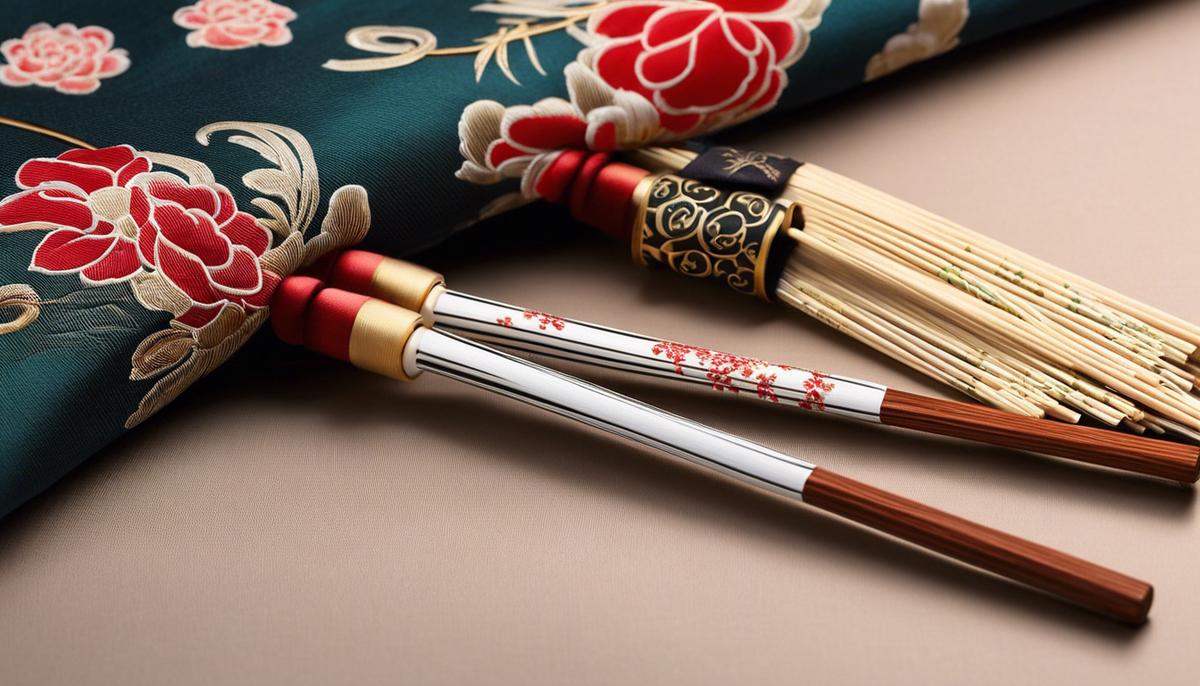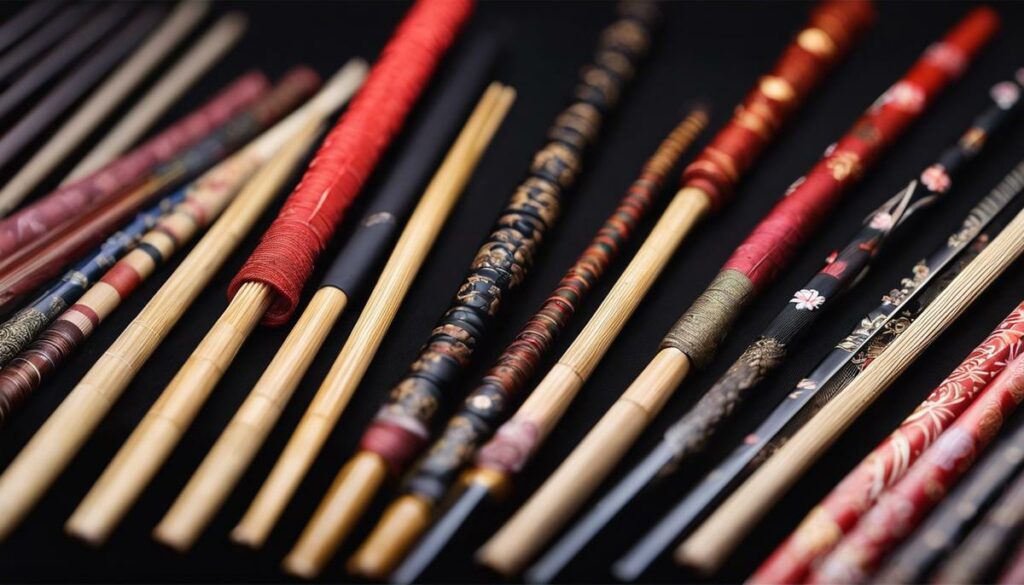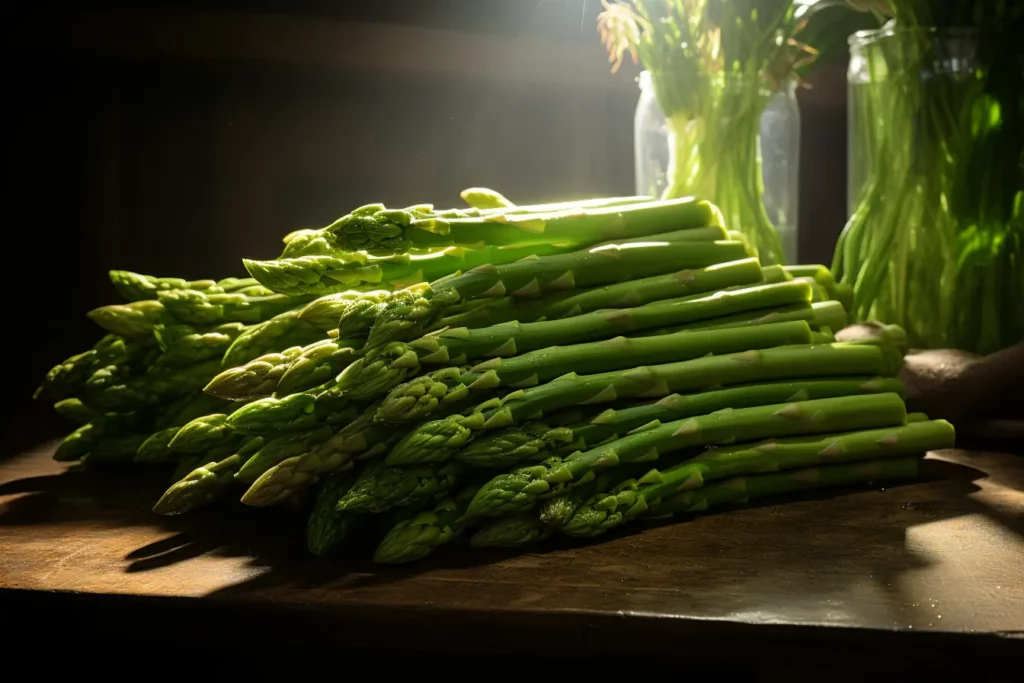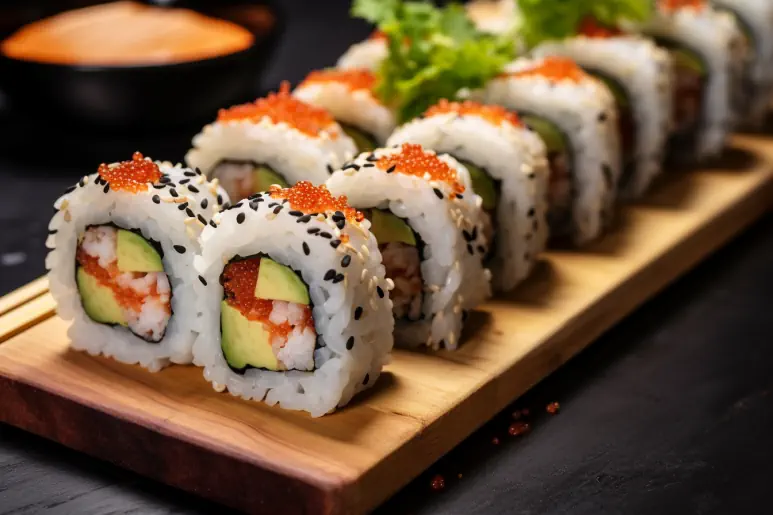The world of chopsticks in Japan is fascinating and multi-layered, full of tradition and history. Chopsticks, or hashi as they are called in Japanese, are an integral part of Japanese culture and play a significant role in their food culture. Their use is an art in itself, offering deep insights into the intricacies of Japanese society and their appreciation for rituals and aesthetics. In this essay, we will take you on a journey through the centuries, from the beginnings of chopsticks, through their cultural significance, to their role in modern society and as a fashion and lifestyle element.
Origin and development of chopsticks
We are all very familiar with forks, knives and spoons. But what about chopsticks? These everyday items, which are especially popular in East Asia, have a long and fascinating history.
Chopsticks probably originated in China over 5,000 years ago. Originally, they were made of bamboo and were used for cooking. Because they were good at flipping and grabbing hot food from the fire, they quickly became popular.
Over time, chopsticks were also used in eating. Their popularity grew in the Zhou Dynasty (1046-256 BCE), when bronze utensils were expensive and not widely available. Chopsticks were an inexpensive alternative and went well with traditional Confucianism-based etiquette.
Chopsticks probably found their way to Korea and Japan through Buddhism in the first millennium AD. In these countries, they have developed differently in form and material.
Today, chopsticks are widely used in many parts of the world and come in a variety of shapes and materials. From inexpensive disposable bamboo to luxurious versions made of precious metals, there is something for every taste and budget.
Chopsticks are much more than just simple pieces of cutlery. They are cultural symbols that are deeply rooted in the history of Asia. They reflect the aesthetics and fine taste of those who use them. In our globalized world, they are a sign that we are opening up to the cuisines and cultures of other countries.
So, the next time you eat Asia, why not put the fork aside and try the chopsticks instead? It could be the gateway to a whole new dining experience!

Photo by hudsonhintze on Unsplash
Chopstick Etiquette and Cultural Significance
At the heart of Japanese culture and tradition are chopsticks, known as hashi. They are more than just an eating tool, hashi are signs of respect and social attitude. In fact, there are many rules and emphasises attributed to chopstick etiquette in Japan that are present in every page of daily life.
It is common knowledge that chopsticks have a high symbolic value in Japan. They represent harmony, balance and the connection of heaven and earth. In a broader sense, they also symbolize family and secrecy, as they are used at the dining table at home. The shape of the chopsticks is representative of this balance, with two identical, connected parts creating a harmonious whole.
The etiquette of chopsticks is deeply rooted in Japanese society and is often seen as an indicator of good manners and consideration. One of the most important rules of etiquette is that you must not put chopsticks in the rice, as this is practiced at funerals and is considered a bad omen. Also, you should never give food from your chopsticks directly to someone else, as it would also remind you of a funeral ceremony.
In addition, the way you hold your chopsticks reflects the respect and appreciation you have for the food and the people at the table. There are even special stands that you put the chopsticks on when you’re not using them to show respect.
Finally, chopsticks also play an important role in festive occasions and ceremonies. Sake drinking, for example, often uses custom-made chopsticks called “celebratory chopsticks” that emphasize the character of the occasion.
Chopsticks are a permanent and indispensable part of Japanese life and represent much more than just a way to consume food. They represent the cultural nuances that are so deeply ingrained in Japanese society and offer a glimpse into their customs and values.

Chopsticks in Modern Japanese Society
In contemporary Japan, chopsticks (hashi) not only enjoy practical use as cutlery, but they are also cultural midlers and symbols with a profound symbolic meaning. They are key players in Japanese cuisine, bridge builders between the food and cultural experience, and connectors of the past with the present.
The symbolism of chopsticks in Japanese culture is all-encompassing. They represent harmony, balance and the connection of heaven and earth. This idea goes back to the principle of yin and yang, which symbolizes harmonious balance and complementary duality. The pair of chopsticks, a yin and a yang element, reflects the pursuit of harmony in everyday life.
In addition, chopsticks are symbols of family and secrecy. In Japanese families, a special set of chopsticks is often purchased for each family member. Often these chopsticks are carefully preserved and seen as a symbol of the bond and unity of the family.
Mastery of chopstick etiquette is considered an indicator of good manners and consideration for others. From home to school, from the workplace to the restaurant, the rules of chopsticks are firmly established and carefully followed. This includes respectful handling of chopsticks and the use of special stands or shelves to keep them clean and tidy.
On special occasions and ceremonies, chopsticks play a central role. Whether it’s New Year’s Day, weddings, or farewell ceremonies, the use of chopsticks is deeply woven into the ritual and atmosphere of these events.
In modern Japanese society, chopsticks represent cultural nuances and customs. Despite globalization and westernization, chopsticks remain a powerful symbol of Japanese culture and identity.
Thus, chopsticks not only shape the everyday lifestyle in Japan, but also the country’s global relations. They promote cultural understanding and allow people all over the world to gain an insight into Japanese culture and tradition.
Whether you’re a fan of sushi, ramen, or tempura, every time you pick up chopsticks, you’re becoming part of the ongoing history and vibrant culture that these simple tools represent. They are not only simple eating tools, but also an important symbol of cultural exchange and global dialogue.

Chopsticks as a fashion and lifestyle element
But how did these humble utensils make the leap from dining table to design highlight? The truth is that chopsticks have opened up an unexpected front in the fashion design and styling world. Not only are they an instrument for eating, but they have also become a source of design inspiration.
The influences can be found everywhere, from fashion accessories to furniture to art installations. The simple, elegant lines of chopsticks have now been incorporated into jewelry and accessories. This is how stylishly minimalist earrings and necklaces are created that try to capture the subtle beauty and elegance of chopsticks.
In interior design, more and more designers are finding inspiration in the clean lines and simple aesthetics of chopsticks. For example, furniture such as tables and chairs that mimic the look and proportions of chopsticks are in high demand. Artists have also recognized the appeal of these simple utensils and immortalized them in stunning sculptures and installations.
In addition, the presence of chopsticks on the catwalks of the world cannot be overlooked. Whether as imaginatively designed hairpins or as eye-catching elements in the fashion world – chopsticks have set the tone in the fashion industry. Designers and style icons use the iconic cutlery as a powerful statement to incorporate cultural elements into their designs.
The entry of chopsticks into the world of cosmetics is also formative. They have made their way into the beauty industry for their precision and simplicity and are now available in various shapes and sizes as makeup tools.
In short, chopsticks’ humble origins and rich history have combined to create a powerful cultural icon that is used far beyond its original use. In a world that is constantly on the lookout for new ideas and inspiration, these centuries-old paraphernalia have proven that they are still relevant and eternally fashionable. The chopsticks are not only an example of the fusion of function and form, but also proof of how tradition and modern design can go hand in hand.

Accordingly, it is clear that the chopsticks are more than just a simple food aid. In its long development, its etiquette and cultural significance, its role in modern Japanese society and its presence as a fashion and lifestyle element, the cultural values and norms of Japan are manifested. Chopsticks represent the heritage, way of life and philosophy of Japanese society. The increasing worldwide spread and recognition of chopsticks testify to the cultural influence and charisma of this ancient tradition. Thus, it can be said that the chopsticks are indeed an important cultural heritage of Japan.


